
We've all been at a fancy restaurant and seen a waiter or Sommelier trot past us with an elaborate, glass contraption that looks like it belongs in a museum. Most likely they’re en route to decant an expensive bottle of wine for a patron. But is the process of decanting all show? And if not, when should a wine be decanted and what exactly does it DO to enhance our enjoyment of wine?
The process of decanting dates back to ancient Rome when wine was fermented in large containers called amphorae. Decanters were used to siphon wine out of amphorae to bring to the table for serving. Since an amphora generally contained a fair amount of sediment at the bottom, the decanting vessel also served to separate the wine from the sediment which, although it poses no health risk, is not very desirable to drink.
Over the years, decanters have been made of various materials including silver, bronze, gold and terra cotta earthenware. During the Renaissance, the Venetians introduced the style of decanter we are most familiar with today. It is typically made of glass and features a thin neck which expands into a broader base which maximizes the wine's oxygen exposure.
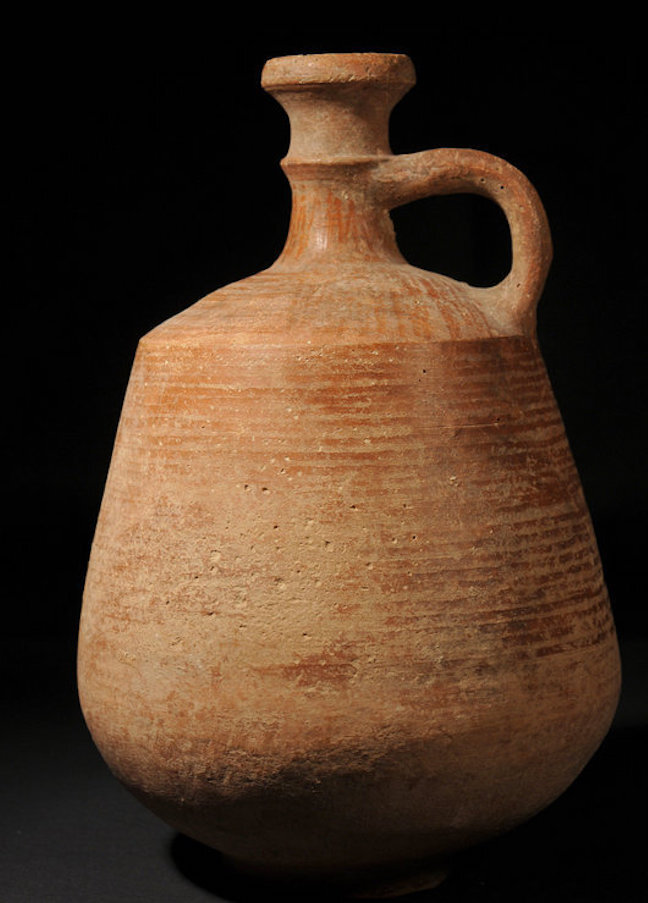
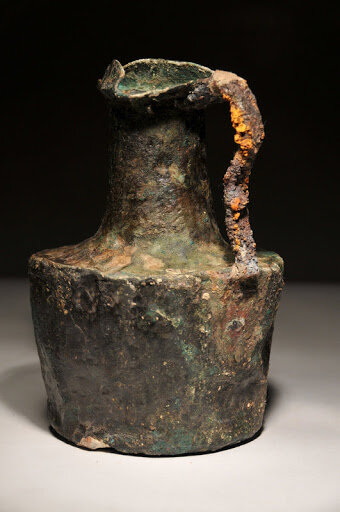
Today, a decanter serves two primary purposes: (1) to separate older wines, usually red wines or Port, from any sediment at the bottom of a bottle which occurs naturally as wines age, and (2) to aerate younger wines, both white and red, which tames their tannin and helps them "open up," and become more expressive and approachable.
While most tannic, young red wines such as Cabernet Sauvignon, Cabernet Franc, Syrah, Nebbiolo, Sangiovese, Malbec, and Merlot will benefit from decanting, older wines can be more fragile. In fact, it's a good idea to taste an older wine (10-15+ years old) before making the decision to decant. If you like the way it tastes right out of the bottle, you may want to avoid the decanting process altogether. If the wine is very "closed" or unexpressive and/or contains a significant amount of sediment, then you will probably want to proceed with decanting it.
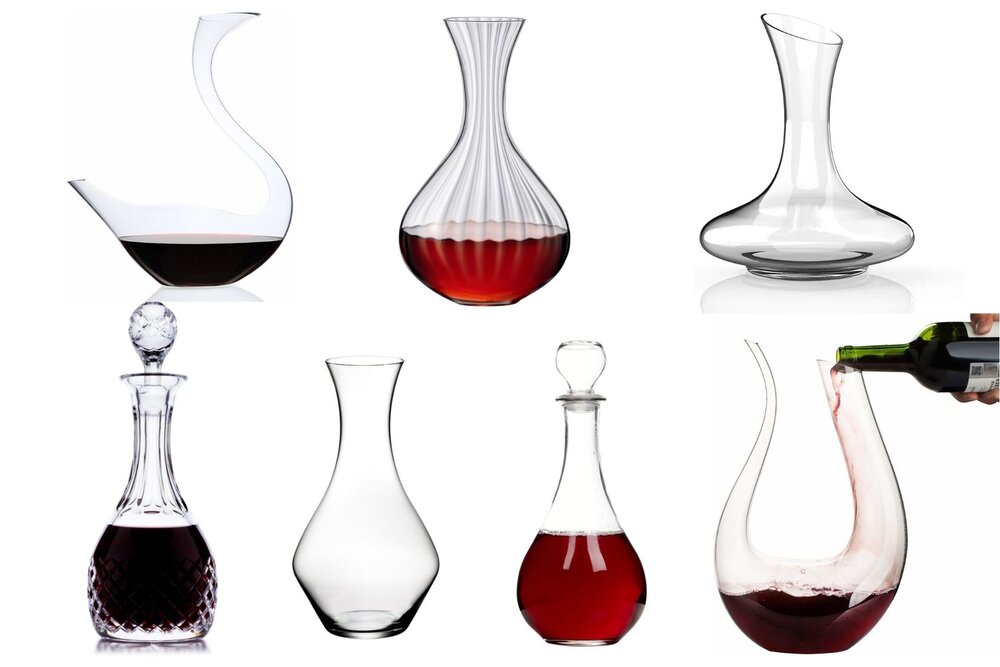
The process of decanting is quite easy to perform and you don't need a fancy decanter to do it - a big glass vase or water pitcher will work just fine! Also, if you only plan on enjoying a glass or two, the Vinturi Wine Aerator is also great choice at a great price. If you would like to go ahead and decant a bottle yourself, just follow the steps below but be sure to take note, decanting a young bottle is different from decanting an older bottle:
If the wine(s) you want to decant are stored on their side in a cellar or wine fridge, be sure to stand the bottle(s) upright for 24-48 hours prior to decanting. This allows the sediment suspended in the liquid to settle to the bottle of the bottle.
Select the decanter (or glass vase or pitcher!) you'd like to use and make sure it is properly cleaned and dried. If you're thinking of investing in a decanter, we really like the ones from Riedel. We've had ours for over 12 years and it does a fabulous job and is easy to clean too.
Remove the capsule and cork from the bottle of wine and wipe any dust or schmutz from the neck and top of the bottle.
If you're decanting a young bottle of wine (under 5 yrs), invert the opened bottle of wine over the decanting vessel and let it flow freely into the decanter. The more "sloshy" this process is, the better (without spilling the wine of course). Young wines really benefit from that infusion of oxygen! As for timing, you can decant young tannic wines up to 2-3 hours before serving, however, if you'd like to experience more of the wine's natural evolution in the glass (as I like to do) you can decant it just before serving.
If you're decanting an older bottle of wine (10+ yrs), place a candle or the light from your iPhone under the neck of the bottle as you slowly and steadily pour the wine in one continuous stream from the bottle into the decanter. Once you begin to see sediment approach or enter the neck of the bottle - slow your flow or stop pouring altogether depending on how much there is. You don't want any sediment getting into your freshly decanted wine!
Once you've poured the wine into the decanter, discard the bottle and any dredges at the bottom and enjoy your decanted wine!
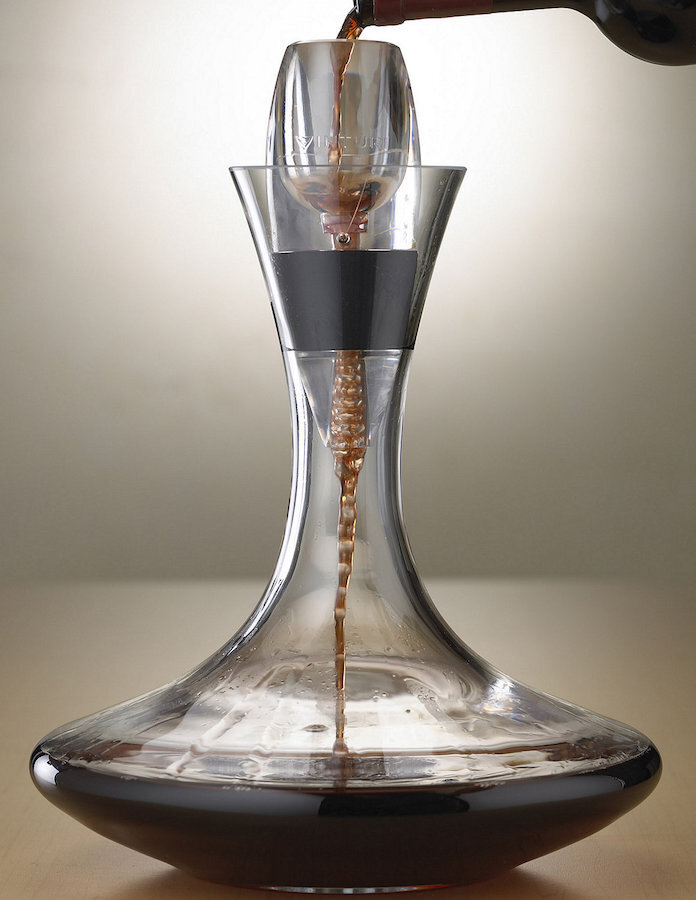
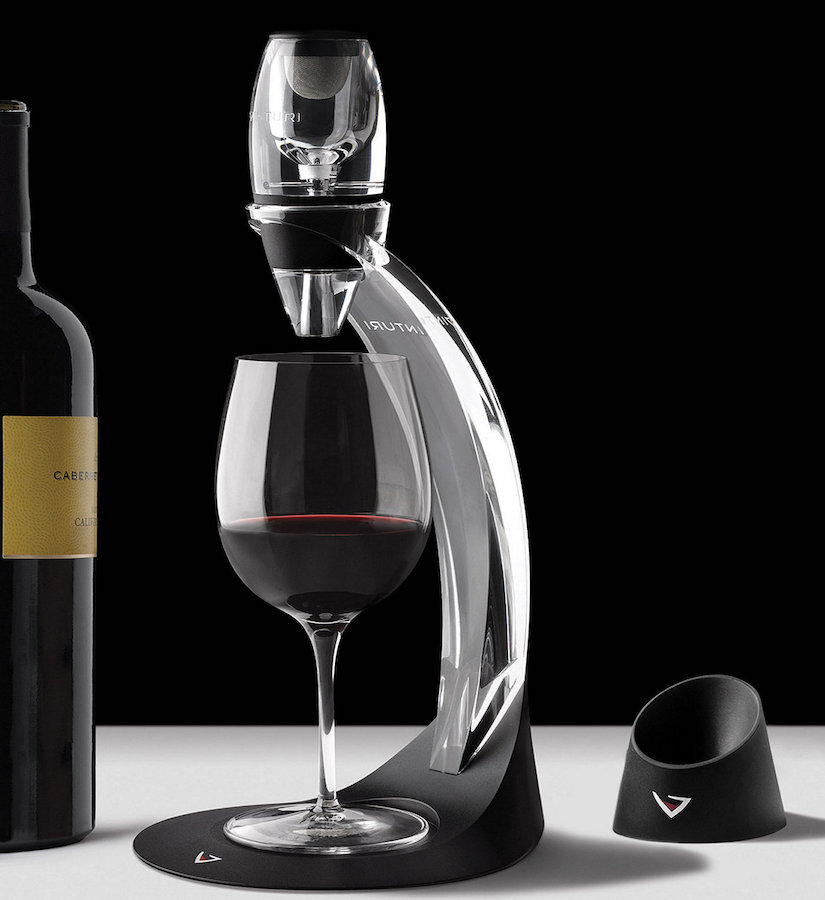
Other twists on decanting:
For especially youthful, tannic red wines you can "double-decant" them by pouring the wine into a decanter and then right back into the bottle - double the decanting, double the fun!
If you're feeling adventurous, you can also "hyperdecant" your wine (young red wines ONLY!) utilizing a technique introduced in the revolutionary Modernist Cuisine cookbooks (see video below!). Simply empty the bottle of the wine into a blender and blitz for 30-60 seconds. Wait a minute or two for the foam to subside and enjoy!
In order to expedite decanting, you can combine a Vinturi Wine Aerator with a decanter and pour the wine through the device into the glass decanter in order to speed things up.
I hope you enjoyed our latest Wine Word of the Week and if you have any “wine words” you’d like to learn more about, please feel free to share them in the Comments section below. To see previous installments of this segment, please click here and, as always, thanks for reading!

With your New Year's Eve hangover in the rear view mirror, along with some of your more stringent resolutions (buh-bye #DryJanuary), it’s time to start planning for the future! To help with the vinous portion of your plan, I’ve got 5 Fabulous New Year’s Wine Resolutions to guide you into the New Year:
MIX IT UP: Because the world of wine can be confusing it's often easier to just stick with the same wine day in and day out - but how boring is that?!? To break out of your rut, why not vow here and now to sample a different wine every week or at least every month? We make it easy at Highlands Wine Shoppe where you can stop by and sample any of the wines on our tasting machines. We always have 16 selections available by the glass (or taste!) and our amazing staff can help guide you towards your new favorite for 2023.
START A WINE COLLECTION: If you've been drinking wine long enough to have a favorite wine region and/or producer it might be time to sock a few bottles away for a later date. Aged wine can be such an enjoyable experience but collecting wine does NOT mean you have to have a custom built, 5,000 bottle cellar. In fact, far from it! From an 18 bottle, under the counter wine fridge to a 150+ bottle, free-standing unit roll with whatever suits YOUR needs. This piece of equipment is VERY important since varying temperatures, mechanical vibration and light exposure are arch-enemies of wine. And stay tuned for more information on our upcoming Collector’s Series of wine tastings that can guide you towards some great selections!
HONE YOUR TASTING SKILLS: Whether you’re a budding wine enthusiast or an aspiring Somm to really learn about wine you need to use a consistent tasting approach that utilizes ALL five senses. This sensory information provides valuable insight into a wine's place of origin, grape variety and "terroir” which are all critical factors when learning about and understanding wine. So if becoming a better taster is something you’re interested in achieving this year, please click here to be notified of our upcoming events and classes - or - we’d be happy to schedule a private class for you and your friends.
DRINK MORE SPARKLING WINES: The focus on sparkling wine/Champagne consumption around special occasions like New Year's Eve leaves the majority of the year unbearably bubbly-free. While Champagne's price tag may limit it to more of a special occasion wine, there are many sparklers from around the globe that are priced for everyday consumption. Wines like Prosecco, Cava and Crémant are perfect for enjoying on a Tuesday night or sipping over lunch with a friend. As an added bonus, sparkling wines also have less calories and alcohol than a glass of Chardonnay or Cabernet Sauvignon - affordable, delicious AND figure-friendly - what's not to love about that?
FOOD + WINE INSPIRED TRAVEL: Our post-pandemic world, in between variants at least, is the perfect time to visit that wine region you’ve been dreaming about. Whether it’s an overnight trip that’s closer to home or a long haul flight to an Old World wine region, put your planning hat on, do your research + get ready to explore. For some food and wine-inspired travel inspo from our travels to wine regions near and far, please check out my post 5 Glamorous Getaways for Food and Wine Lovers.
I hope these suggestions inspire you to further embrace the world of wine in 2023! If you have any other wine-related resolutions I'd love to hear about them, please let me know in the Comment section below.

Easter is fast approaching and this quintessential Spring holiday never ceases to inspire my desire for refreshing, food-friendly wines that pair beautifully with seasonally-inspired flavors.
So if you’re looking for the perfect wines to serve with your Easter feast (and perhaps all season long), here are five of my favorites. They all possess a beautiful balance of fruit and acidity as well as moderate alcohol and tannin that are sure to appeal to a variety of palates and pair perfectly with everything from rack of lamb to Honey Baked Ham!

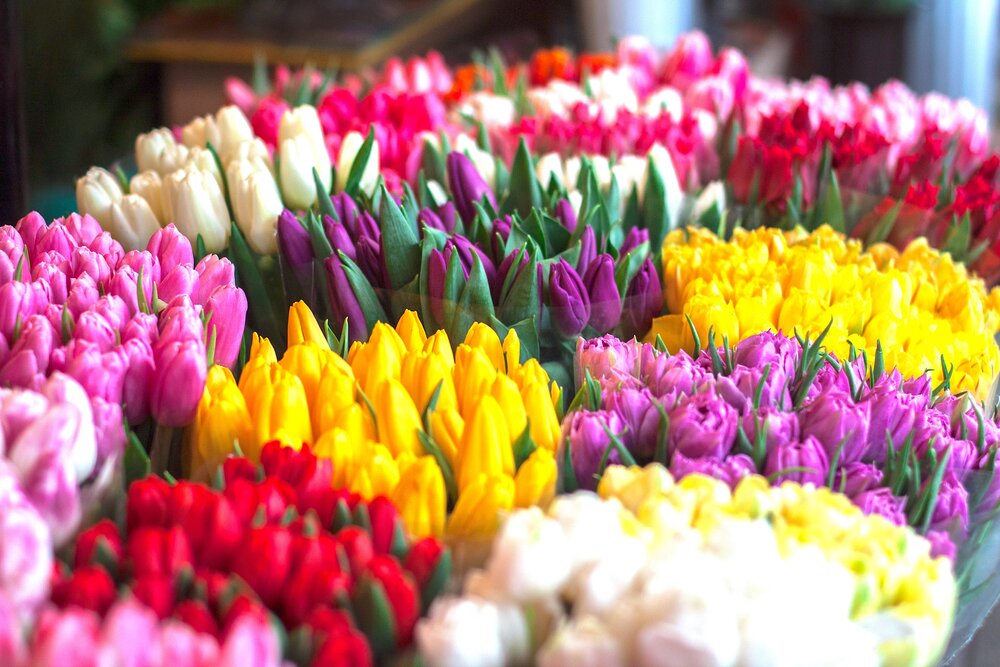
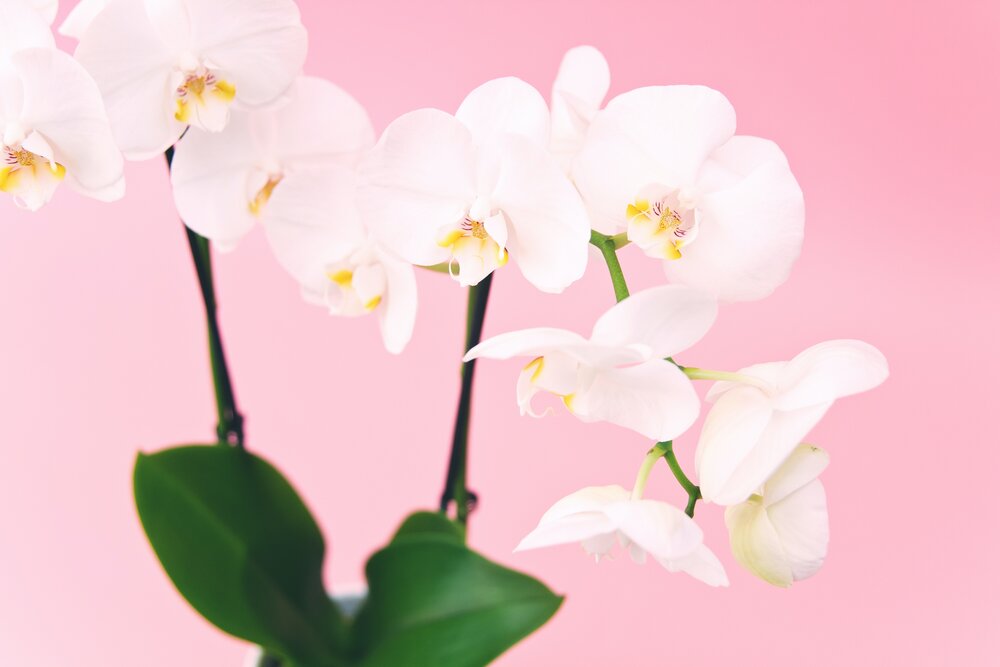
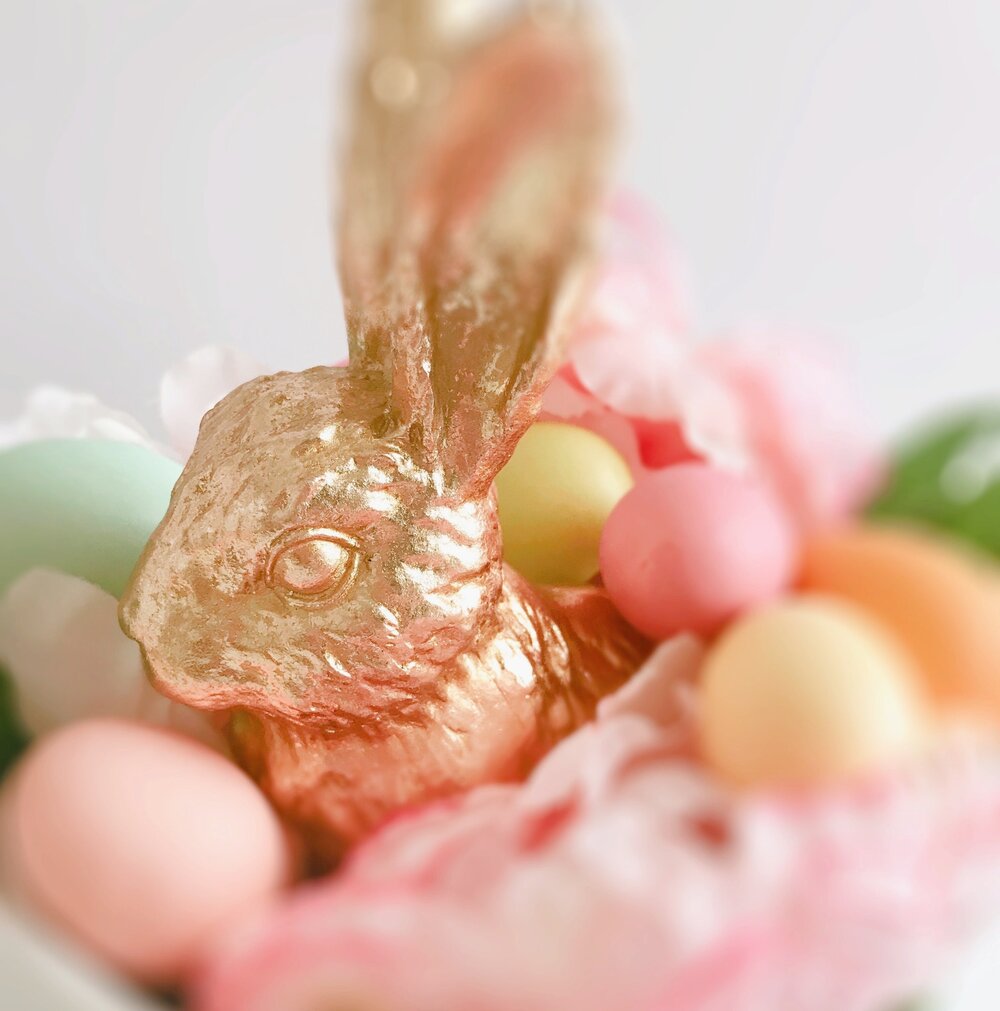
Benvolio Prosecco DOC, Friuli, Italy, NV ($14): Brisk + bubbly with floral-infused aromas + flavors of green apple, citrus + pear, this sparkler is perfect as an aperitif or with brunchy type food. It’s reasonable price point also makes it perfect for Mimosas, Bellinis or other sparkling wine based drinks where you don’t want to mask the classic characteristics of more pricey Champagne.
Yangarra Estate Roussanne, McLaren Vale, Australia ($22): Fresh + fruit-forward, this juicy Aussie gem is 100% Roussanne, a grape indigenous to France’s Rhone Valley. Crafted with a kiss of French oak, Roussanne is known for its rich mouthfeel + lush notes of citrus, honeysuckle + spice. This wine pairs perfectly with Spring salads, seafood and/or shellfish + other lighter fare.
Whispering Angel Cotes de Provence Rosé, Provence, France ($24): This lovely, Provencal-style, DRY rose that kicked off the #RoseRevolution a decade ago is made from a blend of Grenache, Cinsault + Rolle (aka Vermentino) grapes. In hallmark Provencal style, this wine delivers delicate, mineral-infused notes of rosewater, citrus + strawberry and is perfect on its own or paired with any variety of Spring-inspired foods such as ham or lamb.
Georges Duboeuf Jean Descombes Morgon, Beaujolais, France ($22): When it comes to Spring red wines, you simply MUST explore cru Beaujolais. Hailing from the Southernmost region of Burgundy, these fabulous light, fruity reds made from the Gamay grape are known for their fruity aromas + flavors and lack of astringent tannins. They are extremely versatile at the table + pair perfectly with ham + a variety of Spring/Easter dishes.
Copain Tous Ensemble Pinot Noir, Anderson Valley, California ($28): Hailing from Northern California’s Anderson Valley, this wine is an embodiment of the earthy, sweet beet root undertones that are indicative of the region’s Pinot Noir. This medium-bodied wine has vibrant dark red fruit on the nose and palate and delivers pure, focused flavors with a great lift on the finish from the acidity.

It’s been almost a decade since the #RoséRevolution began and these glorious (dry) pink wines have been enchanting wine lovers ever since. Thankfully, this delightful trend shows NO signs of stopping and to kick off Spring 2021 (aka Rosé Season) I’m sharing some fabulous, reasonably priced rosés that are perfect for your Spring and Summer soirées.
And while Provence is the birthplace of rosé, pretty much every wine region in the world produces its own version of this pink wine, made from its own indigenous grape(s) with its own unique color and flavor profile. For that reason, I’m thrilled to select wines that represent just how diverse these delightful wines are and encourage wine lovers everywhere to taste the #RoséRainbow.

Mionetto Rosé Prosecco, Veneto, Italy, NV ($12): Amen and Hallelujah! Rosé Prosecco is now officially legit as per the Prosecco DOC Consortium who officially signed it into law last year. Glera and Pinot Noir are the only permitted grape varieties and as always Mionetto is offering fabulous value for the price. This blend of 90% Glera and 10% Pinot Noir is transformed into sparkling wine via the Charmat method resulting in a beautiful, soft pink hued sparkler with enticing notes of red berries, grapefruit and honey. Pair with delicious mushroom risotto and buon appetito!
Mastroberardino Lacrimarosa Rosato, Campania, Italy ($22): This delightful rosato from the renowned Mastroberardino family who’ve been making wine for 10 generations is made from 100% Aglianico, the region’s signature red grape. “Lacrimarosa” means “pink tears” and is named for the wine’s method of production during which the grapes are gently pressed, imparting a slight pink color to the wine. This wine has a beautiful, pale rose petal pink color and delicate, mineral-infused aromas and flavors of white peach, melon and citrus accentuated by a brisk acidity that is perfectly tamed by a savory antipasti platter.
King Estate Rosé of Pinot Noir, Willamette Valley, Oregon ($24): Founded in 1991, King Estate is a family owned and operated winery that focuses on organic, sustainable + biodynamic winemaking with a focus on the Pinot Noir grape. The fruit was whole cluster pressed and left on its skins just long enough to develop the pink color + then moved to stainless steel tanks for fermentation. This 100% Pinot Noir rosé displays a deep, rosy pink hue and fresh, juicy, floral-infused aromas and flavors of ripe strawberries, rose petals, wet stone + citrus. It is light + bright up front + crescendos with a mouthwatering, food-friendly acidity.
Out East Cotes de Provence Rosé, Provence France ($26): New lifestyle wine brand, Out East focuses on wines produced from sustainably farmed vineyards tended by the same families for multiple generations which ensures world-class growing + winemaking standards. This delightful rosé is a classic blend of 70% Grenache and 30% Cinsault harvested from cool climate “Green Provence.” It is displays a bright, peachy hue with complex aromas + flavors of white peach, cantaloupe, red berries, citrus + spice accentuated by a bright, lively acidity and minerality. It’s the perfect pairing for a classic Provençal Salade Niçoise!
Wölffer Estate Summer in a Bottle Rosé, Long Island, New York ($26): This gorgeous estate located in the bucolic splendor of Sagaponack, NY has essentially become the epicenter of the aspirational rosé lifestyle, the US counterpart of Provence. This delightful wine (with an equally gorgeous bottle!) is a lovely blend of 48.5% Merlot, 17% Chardonnay, 13% Cabernet Sauvignon, 13% Cabernet Franc, 3% Gewürztraminer, 3% Sauvignon Blanc, 2% Pinot Meunier + 0.5% Pinot Blanc. It has a coppery-pink hue and savory aromas and flavors of blood orange, pear, apple and spice. The mouth-feel is vibrant, minerally and spicy with a rich texture and fine tannins.
Chateau Musar Jeune Rosé, Bekaa Valley, Lebanon ($28): Hailing from an iconic producer in Lebanon’s Bekaa Valley who’s been making wine since 1930, this rosy hued wine is a delightful choice for Spring. The Musar Jeune Rosé is made of 85% from Rhône grapes Cinsault and 15% Mourvedre from vines planted since at around 1,000 meters above sea level. It is made using the ‘saignée’ and pressing method and fermented in cement-lined vats and is released unoaked a year after the harvest. It is smooth and round on the palate with notes of raspberry, almond and red appleskin with a warm, spicy finish. It’s perfect for pairing with shellfish, grilled salmon or lighter pork dishes.

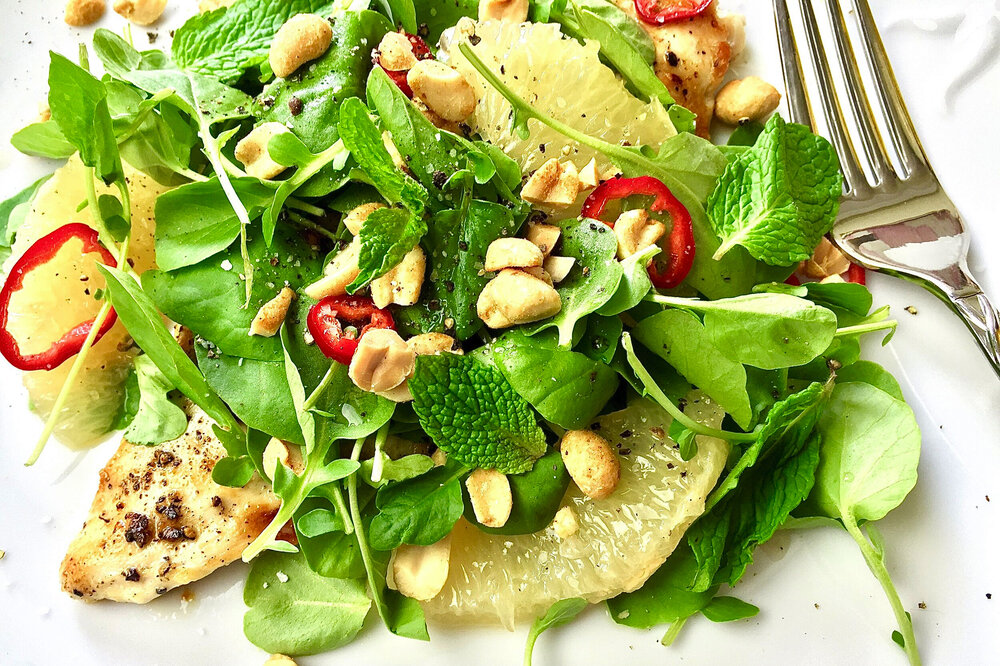
Spring has finally sprung, serving as a seasonal indicator it's time to switch from comforting winter dishes to lighter, more figure friendly fare. As you might imagine, here in South Florida citrus plays a large role in our Springtime cuisine. Luckily, we're able to source many types of citrus locally, so when I came across this recipe for Thai Pomelo Salad (Dtam Som Oo), it peaked my interest since it incorporated the deliciously exotic pomelo.
Also known as shaddock, pummelo, Chinese grapefruit, or lusho fruit, the pomelo is native to Southeast Asia and is the largest known citrus fruit. It is an ancestor of the grapefruit and over the years, was introduced to North America where it is now grown in many states including Texas, California, Arizona and Florida.
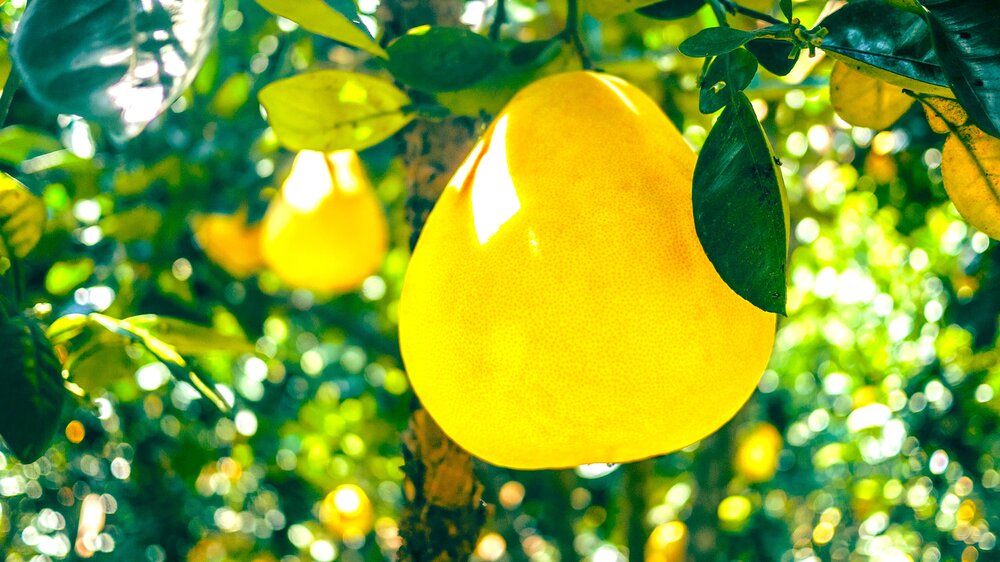
Pomelos are the largest known citrus fruit
The large fruit tastes like a milder version of a grapefruit, which is slightly sweeter and not quite as acidic. If you happen to crave this pomelo salad outside of its season (December-April in Florida) you can easily substitute grapefruit with delicious results.
I wanted to turn this salad into a dinner recipe so I added chicken to make it a little more substantial. I simply pounded a few chicken breasts flat, seasoned them with olive oil, salt and pepper and then grilled them on my grill pan. To serve, I topped each cooked chicken breast with a large handful of watercress, pomelo wedges, dressing, mint leaves and peanuts. The dressing is CRAZY flavorful and gives this light, healthy dish plenty of personality.
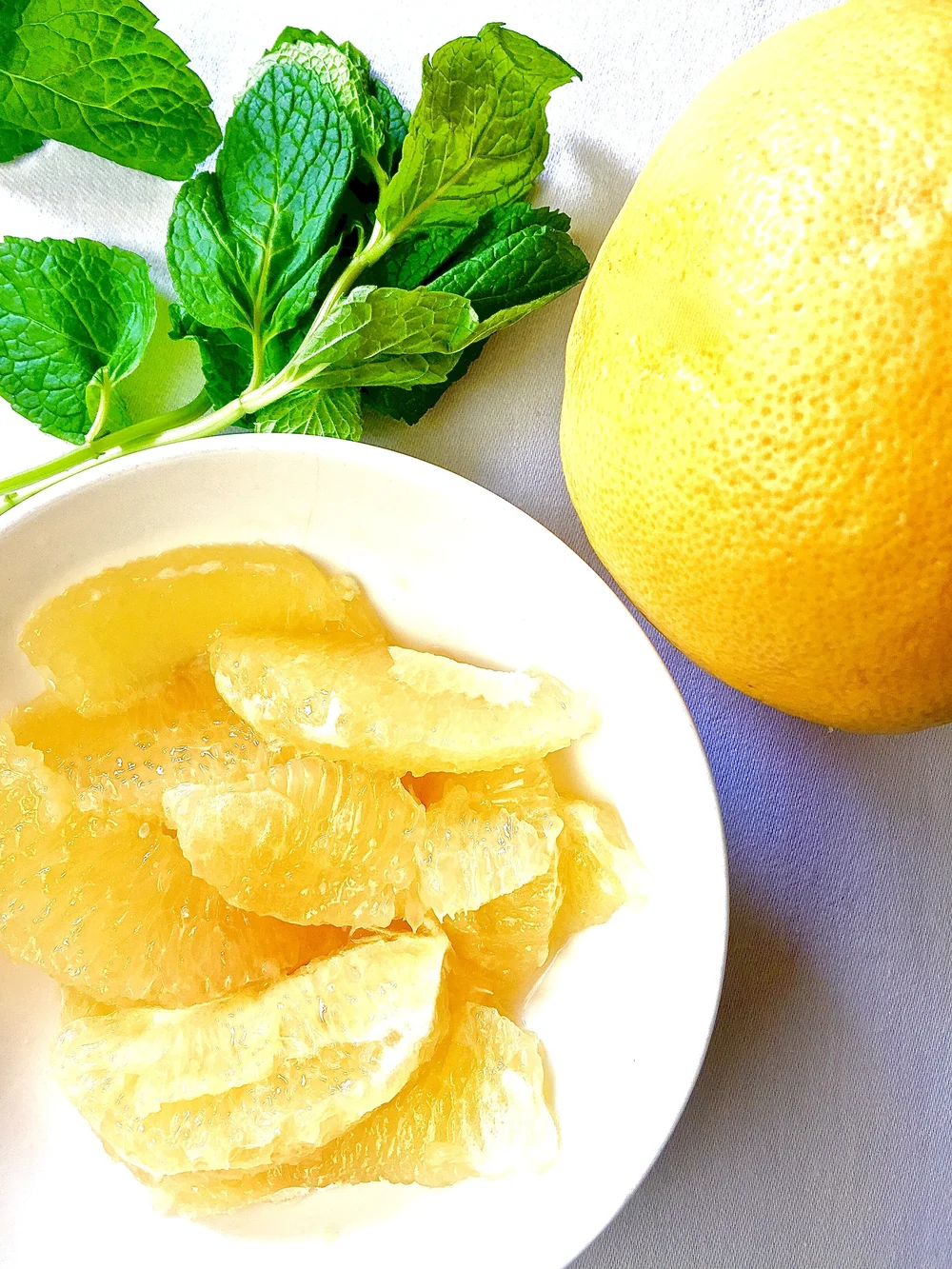
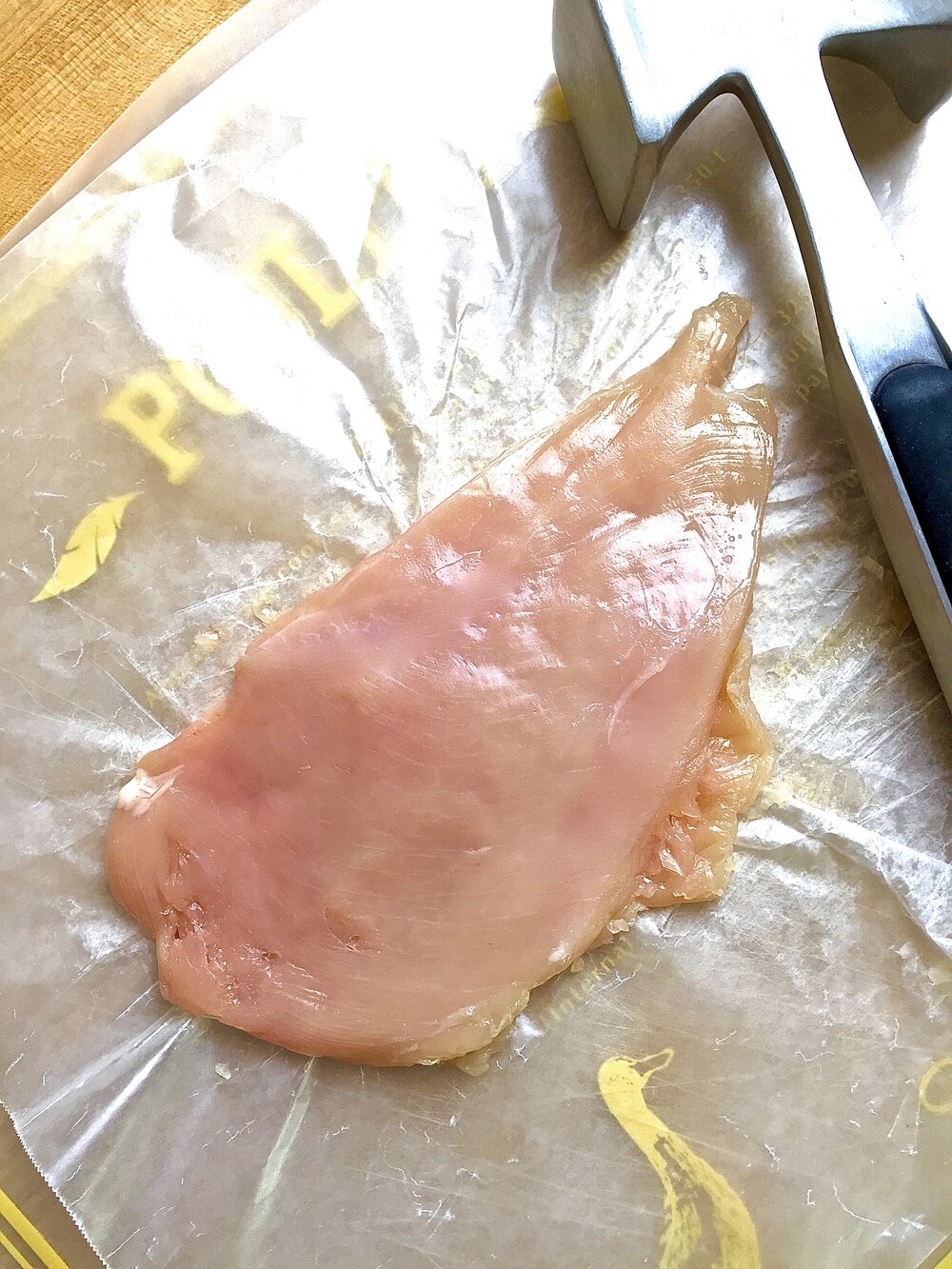
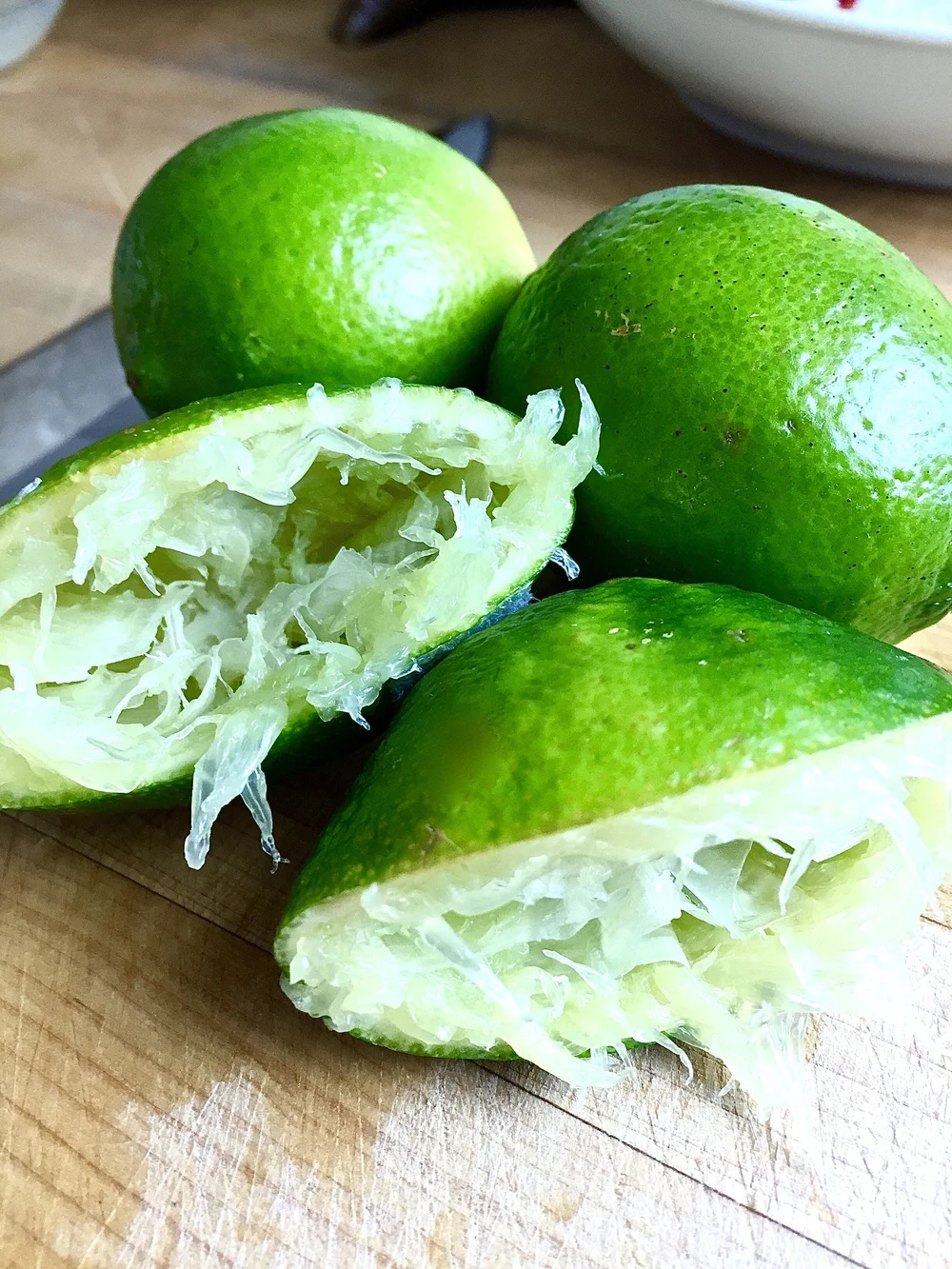
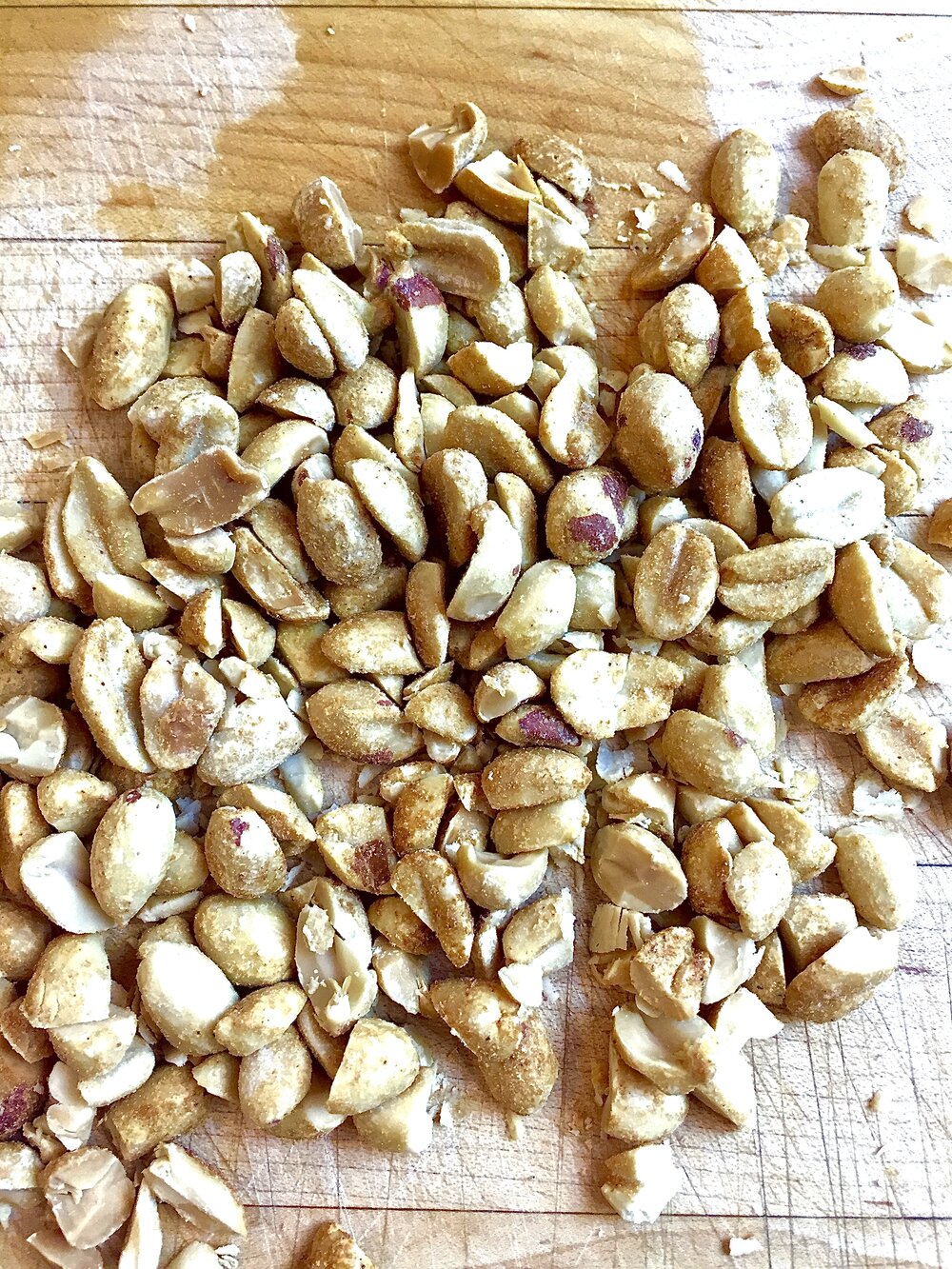
A word of advice, slicing a citrus fruit into "supremes" can take a little practice to master. It involves separating the fruit into segments and removing the peel, pith and outer membranes. For a quick instructional video from Iron Chef Michael Symon on how to perform this culinary technique, please click here.
I highly recommend using a very sharp knife to supreme your citrus and be sure to place your fruit in the fridge for at least thirty minutes prior to slicing - it will make the job MUCH easier. Once you complete this part of the prep, assembling the salad is a TOTAL breeze!
To pair with the Thai Chicken and Pomelo Salad, I love a white wine with plenty of personality like the Château Pesquié Terrasses Blanc ($16) from France's Southern Rhone Valley. This delicious blend of 70% Viognier, 15% Roussanne, and 15% Clairette is delightfully floral, fresh and fruity with notes of honeysuckle, white peach and pear.
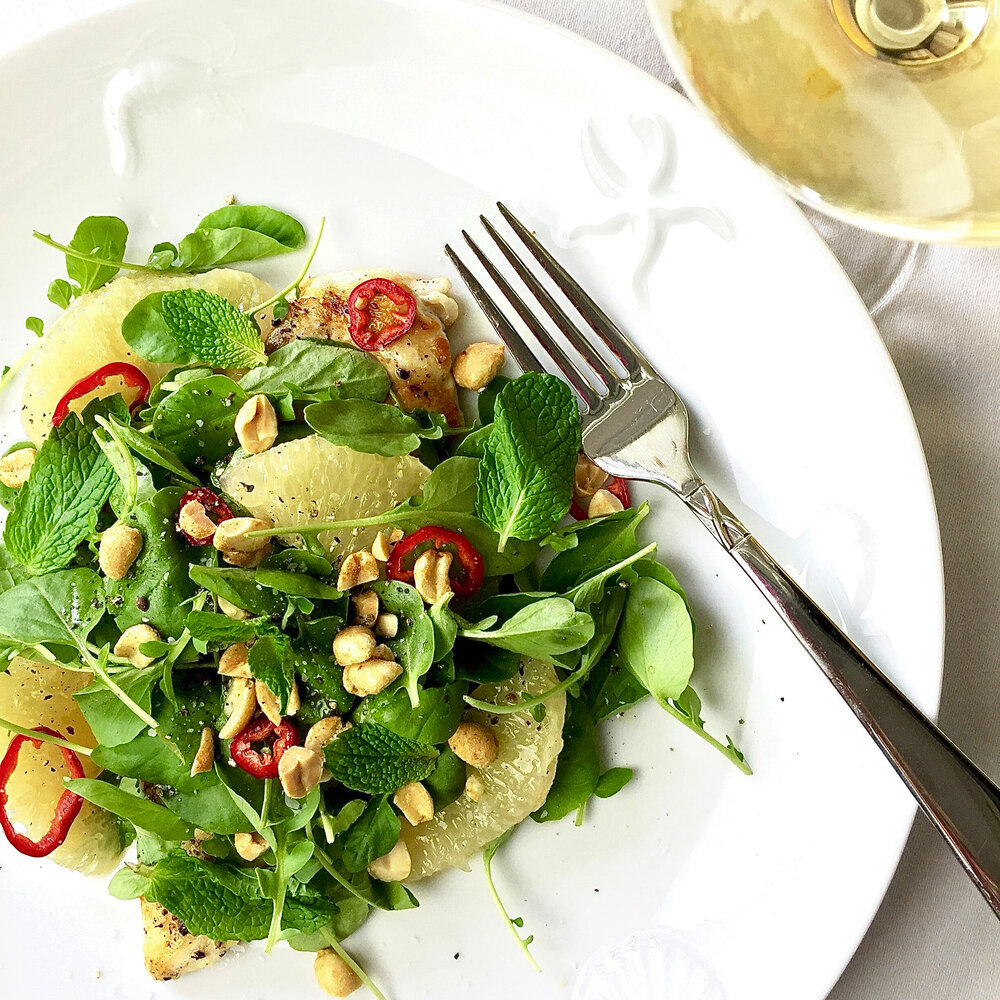
Winemakers Alexandre and Frédéric Chaudière fermented it entirely in stainless steel and concrete vats to preserve the wine's fresh fruit aromas and flavors which complement the flavors of the dish beautifully! What are YOUR favorite farm stand finds for Spring? From asparagus to watercress there are SOOO many good ones to savor and enjoy so please do tell in the comment section below.
print recipe"FAST + FABULOUS: THAI CHICKEN + POMELO SALAD”
Author: Stephanie Miskew | The Glamorous Gourmet (adapted from Saveur Magazine - March 2014)
Serves: 4
Pair with a refreshing white wine like a Cotes du Rhone Blanc from France or Sauvignon Blanc from New Zealand
INGREDIENTS
1/4 cup Thai fish sauce
2 Tbsp. sugar
1 Tbsp. fresh lime juice
1-2 Pomelos depending on size (or 2 grapefruit), peeled + supremed
2 fresh red Thai chiles, thinly sliced
1 clove garlic, finely chopped
1 cup trimmed watercress
1/3 cup roughly chopped peanuts, lightly toasted
20 fresh mint leaves
4 boneless, skinless chicken breasts, pounded thin
INSTRUCTIONS
Drizzle chicken breasts on both sides with olive oil and then season with salt and pepper.
Preheat a grill pan or outdoor grill to medium-high heat and lightly brush grates with olive oil. Cook the chicken breasts approximately 3-4 minutes per side until done and set aside.
Whisk fish sauce, sugar, lime juice, chiles, garlic, and 1/4 cup water in a bowl and set aside.
Plate chicken and top with the watercress. Scatter pomelo or grapefruit sections over the salad, spoon on the dressing and top with the chopped peanuts and mint leaves.

Fish, to taste right, must swim three times, in water, in butter & in wine.
From succulent shrimp, scallops, mussels and clams to flaky flounder, grouper, snapper + mahi, Spring is the perfect time to explore the utter delights of pairing wine and seafood. The classic tenet “white wine with fish” just doesn’t seem to capture all the nuances of flavor and texture that can make these combinations so truly exceptional. And this isn’t exclusively white wine territory either! Rosés and reds are definitely included.
The following ten wines cover ALL the seafood bases and whether you prefer briny oysters on the half shell or seared pumpkin swordfish with Romesco sauce, I’ve got great options for you. I hope you enjoy exploring these delicious combinations and please let me know your favorite in the comments section below.
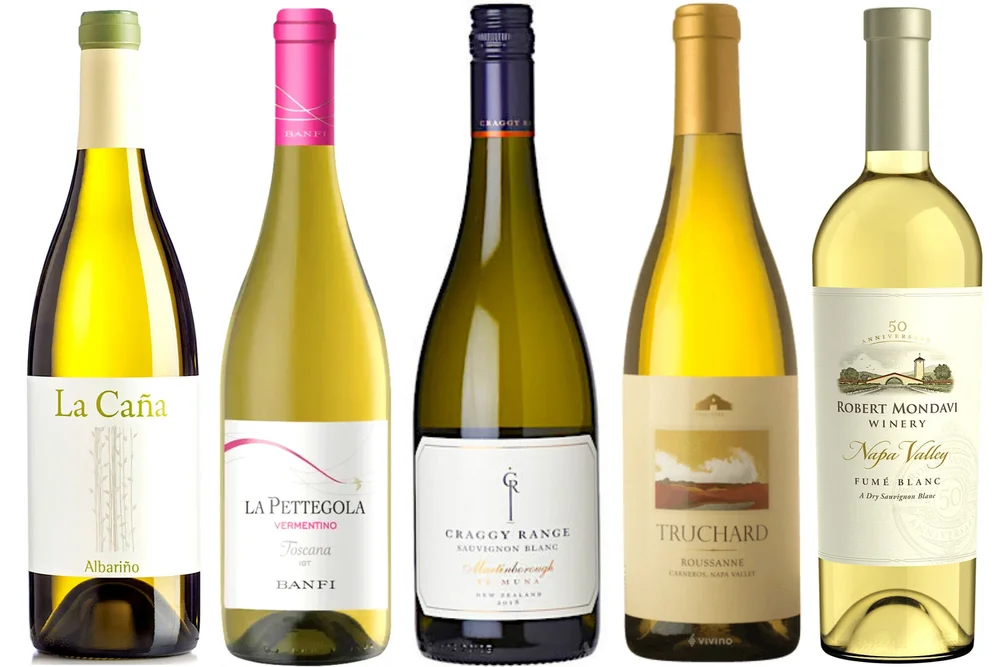
1.) Bodegas La Caña Albariño, Rías Baixas, Spain ($18): This vinous gem hails from a boutique winery located on the Northeast coast of Spain in close proximity to the Atlantic ocean. As a result, it’s a natural match for just about anything plucked from the sea! It’s vibrant notes of lime blossom, white peach, green apple + minerals pair especially well with grilled octopus, shrimp and/or flaky white fish like snapper, cod or halibut.
2.) Banfi La Pettegola Vermentino IGT, Tuscany, Italy ($20): Hailing from the coastal Maremma zone of Southern Tuscany, this bright, lively white wine is the vinous equivalent of a squeeze of lemon with its lively acidity + vibrant citrus notes! Pair it with just about any fish dish you’d enjoy lemon on like fried calamari, crab cakes and/or shrimp and your palate is in for a real treat.
3.) Craggy Range Te Muna Sauvignon Blanc, Wairarapa, New Zealand ($22): This 100% Sauvignon Blanc from the Martinborough district of New Zealand’s North Island is fermented entirely in stainless steel resulting in a wine with alluring notes of citrus, white flowers + stone fruit. On the palate, layered flavors of white peach, pear + lemon meringue are accentuated by a zesty, juicy acidity that make it perfect or pairing with the delicate flavors of shellfish like raw oysters, steamed clams and/or mussels.
4.) Truchard Vineyads Roussanne, Carneros, California ($25): Originally from France’s Rhone Valley, the Roussanne grape produces aromatic, viscous white wines in the Carneros region of California as well. Its aromas and flavors of white flowers, pear, minerals and tropical fruit accentuated by notes of brioche and vanilla make it the perfect pairing for seafood with a hint of sweetness such as plump scallops, clams, stone crabs and/or lobster.
5.) Robert Mondavi Fumé Blanc, Napa, California ($23): Introduced by Robert Mondavi in 1968, Fumé Blanc, is a blend of Sauvignon Blanc and Semillon that’s fermented in a percentage of oak for added depth and complexity. This wine exhibits refreshing notes of lime blossom, citrus, juicy peach, fresh melon and a hint of jasmine along with a rich texture and lengthy finish. It’s perfect for pairing with heartier seafood dishes such as lemon capellini with caviar, linguine with clam sauce and/or seafood gratin.

6.) King Estate Pinot Gris, Willamette Valley, Oregon ($18): If oily fish like salmon and mackerel are your jam you probably know how challenging it can be to find the right wine pairing. And while many people love to pair them with Pinot Noir, Pinot Gris can make a much better match. The gorgeous viscosity of Pinot Gris more closely echoes the delightful, oily texture of the fish.
7.) Rock Angel Cotes de Provence Rose, Provence, France ($32): This delightful rosé is made of primarily Grenache and Rolle but, unlike it’s little sister Whispering Angel, it received a kiss of oak that resulting in a fuller bodied wine with more complex aromas and flavors of red berries, citrus, strawberry and rose with a hint of spice. It’s also perfect for pairing with heartier fish dishes like grilled swordfish or tuna steaks as well as tomato-based seafood dished like bouillabaisse.
8.) Craggy Range Pinot Noir Martinborough, Wairarapa, New Zealand ($25): By definition, Pinot Noir is on the lighter end of the red wine spectrum and this incarnation embodies all of this coveted grape’s best qualities! With notes of black cherry, strawberry and cola accompanied by earthy tannins, this wine is a perfect pairing for salmon, tuna, marlin, swordfish, mackerel, bluefish or other fatty, meaty, big-flavored fish.
9.) Cune Rioja Crianza, Rioja, Spain ($14): This delightful blend of 85% Tempranillo, the signature red grape of Rioja, and 15% Garnacha Tinto and Mazuelo, was aged in American oak barrels resulting in a wine with savory aromas and flavors of tart cherry, plum, cocoa and clove accompanied by supple, earthy tannins. It’s a natural match for grilled or smoked fish dishes like fish dip or fish served with a Romesco sauce.
10.) Domaine du Pavillon de Chavannes Côte de Brouilly Cuvée de Ambassades, Burgundy, France ($24): Cru Beaujolais (not Beaujolais Nouveau) like this stylish, under-the-radar gem are fabulous choices to pair with meaty, full-flavored fish and seafood dishes. Made from the Gamay grape, this medium-bodied, stylish red displays alluring notes of black cherry, plum, violet and cassis accompanied by light, supple tannins that are key to its ability to pair so well with food.
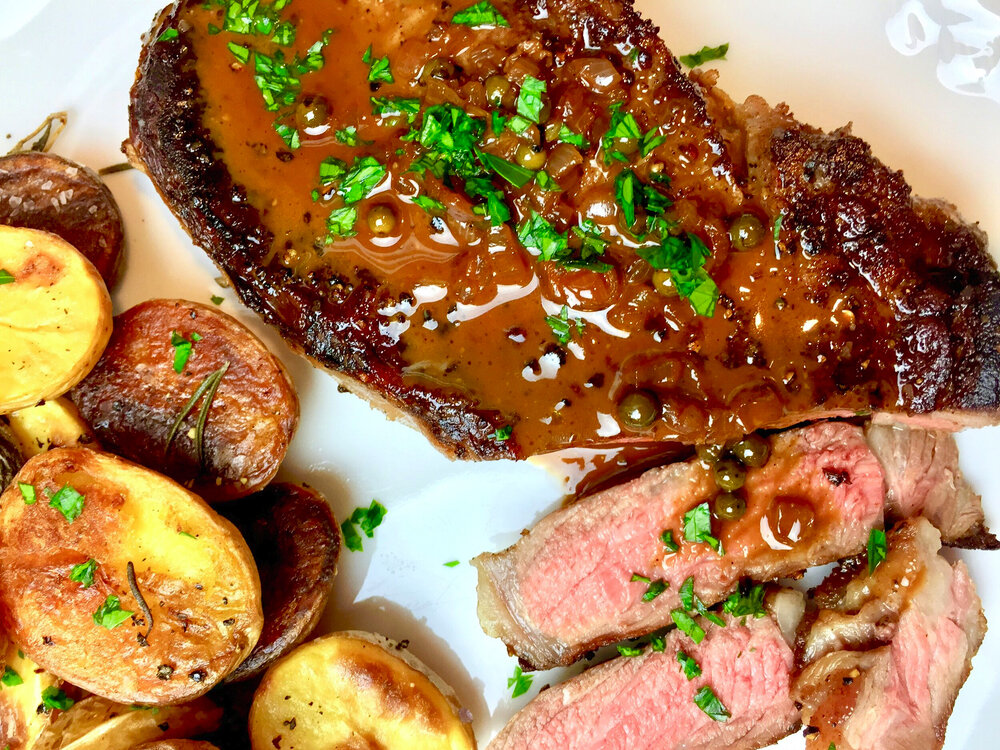
If you're looking for the perfect dish to seduce your Valentine this year - look no further! My recipe for spicy, succulent Steak au Poivre and savory Roasted Rosemary Garlic Potatoes paired with a sensual, seductive red wine ensures a Valentine’s Day filled with endless possibilities
Steak au Poivre is a classic French dish that consists of flavorful pan roasted steak, usually filet mignon, seasoned with peppercorns and then topped with a delightfully creamy, peppercorn-Cognac sauce. The traditional accompaniment is pommes frites, crispy thin french fries, which are essential for mopping up all the mouth-watering pan sauce. I've made a few small tweaks to this classic recipe that have upped the deliciousness factor and made it perfect for satisfying your ravenous Valentine.
While you can use filet mignon in this recipe, I prefer the decadent flavor and superior texture of a juicy, well-marbled New York strip. But feel free to use whatever cut of steak you prefer in this recipe for Steak au Poivre à Deux, which is specifically tailored for two.
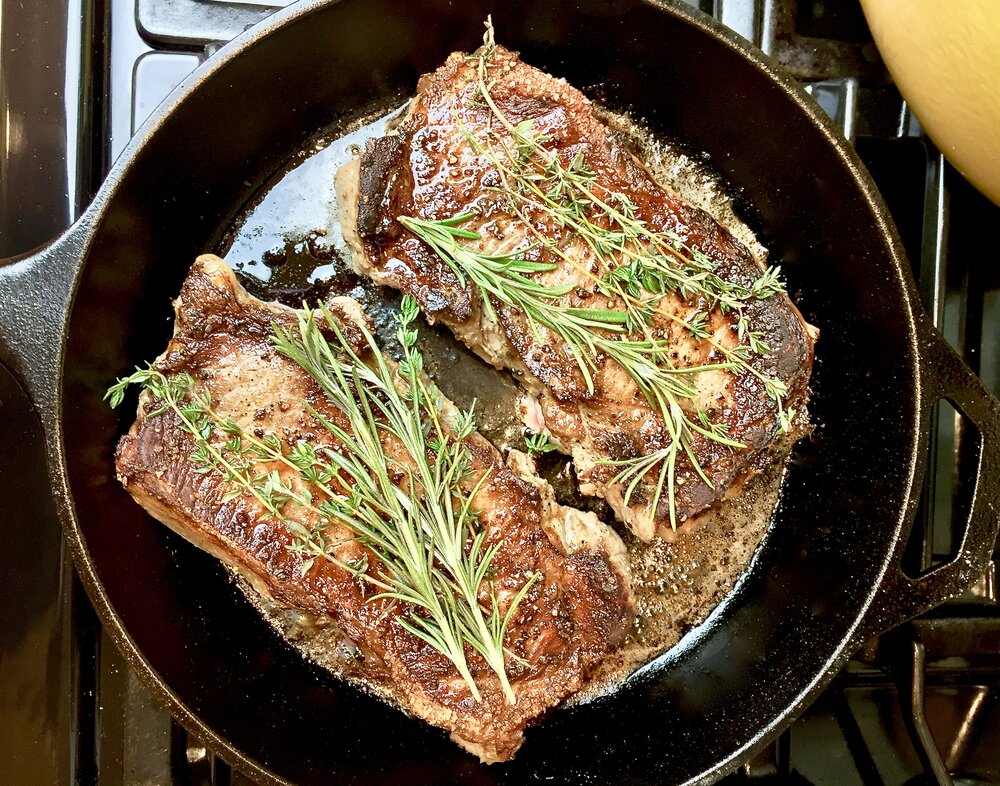
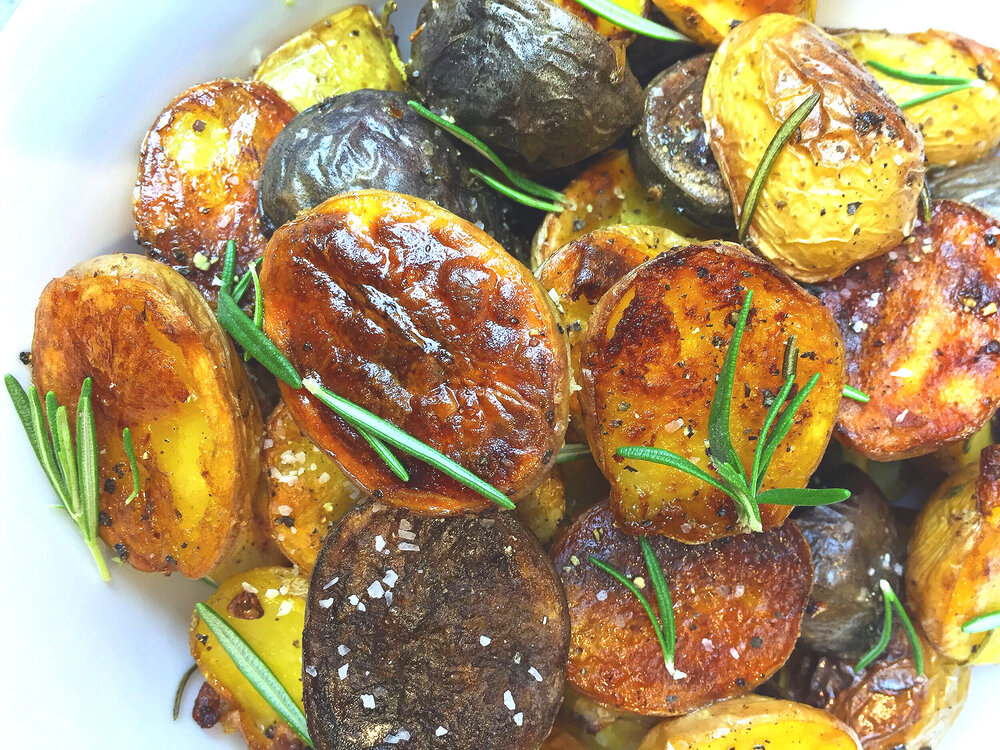
You can also adjust the amount of black pepper to suit your tastes but the sauce also calls for green peppercorns in brine - PLEASE don't skip this ingredient! You might have to make a trip to the gourmet grocery store (I found them at Fresh Market) but it IS Valentine's Day after all and it really adds such amazing flavor to the sauce.
Instead of pommes frites, I've substituted Roasted Rosemary Garlic Potatoes which are incredibly flavorful, easier to make and healthier than fried frites. More importantly though, they are even more effective at mopping up the mouth-watering sauce. Can you tell I'm obsessed with the sauce?!?
And a word of caution when making this recipe, please be sure to remove the pan from the heat when adding the Cognac and immediately after flaming it. The flames may shoot up pretty high (see photo above) but don't panic, they subside quickly. So while you're dazzling your lover with your pyrotechnic skills, just take a few deep yoga breaths as the Cognac quickly burns off.
And be sure to taste the sauce towards the end of cooking and adjust the seasoning if necessary. If you find it too salty, just add a bit of water and/or more cream (yes!) to thin it out which should do the trick.
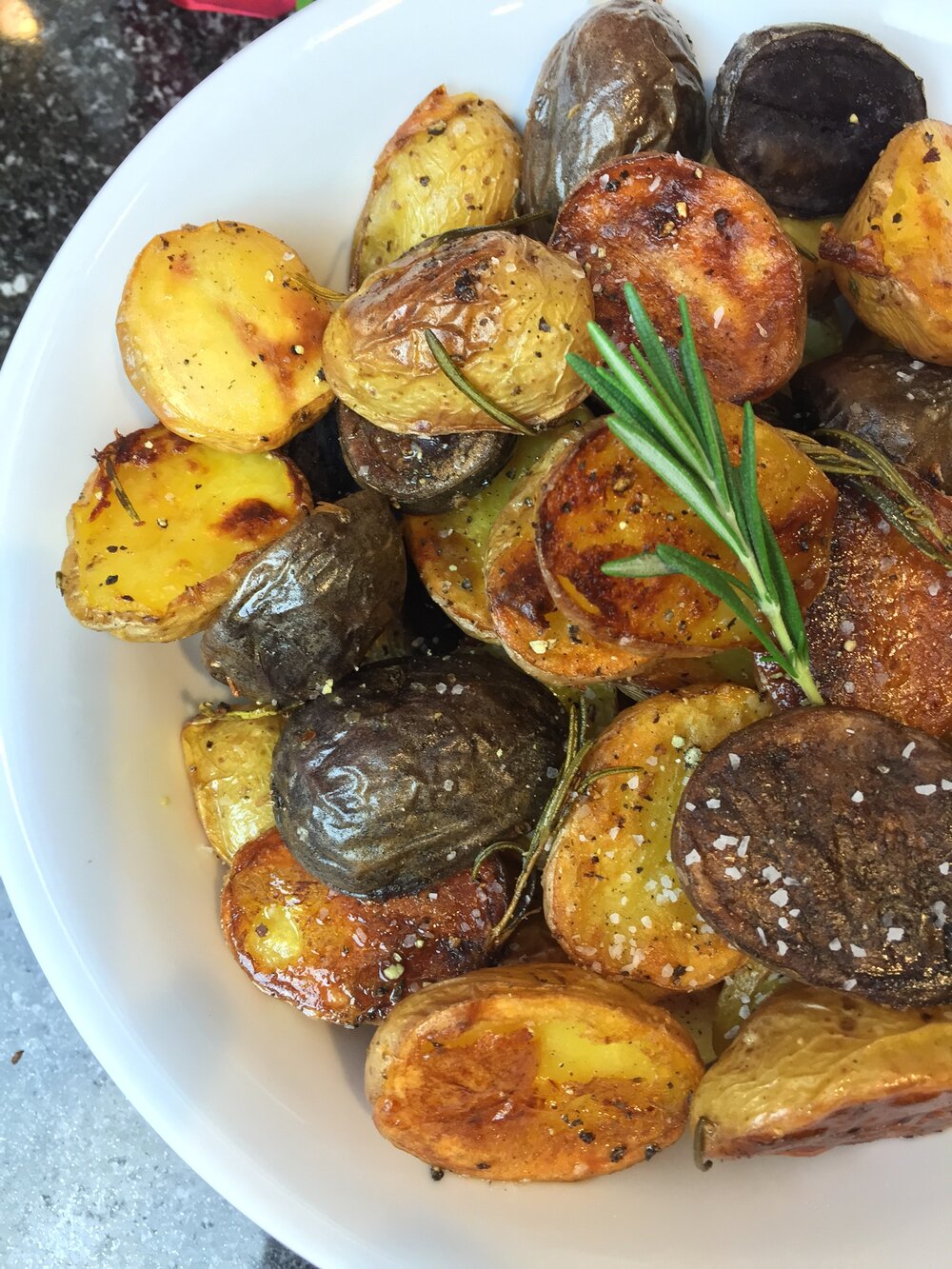
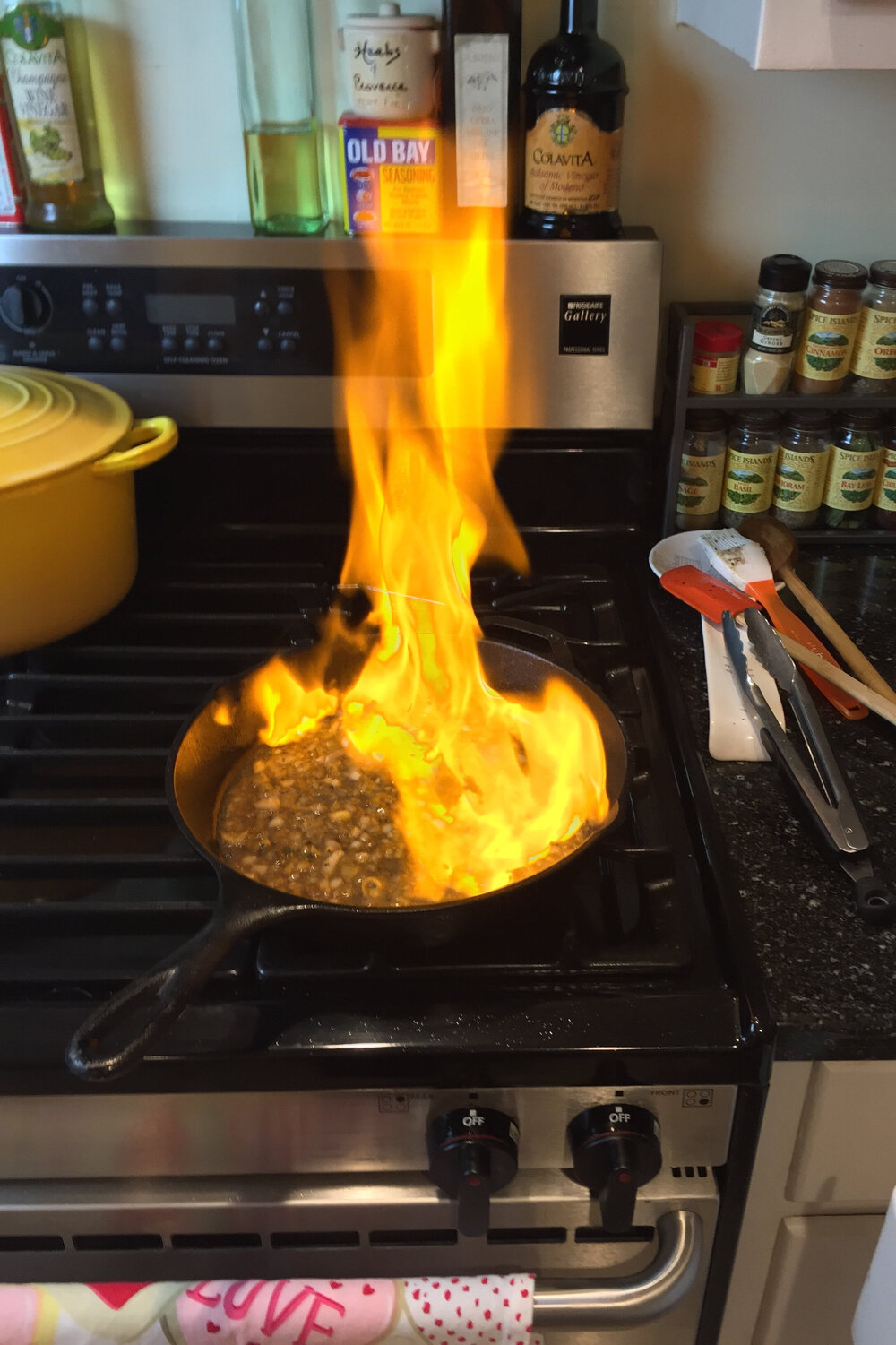

And as far as a wine pairing goes, a big, bold California Cabernet Sauvignon is perfect with this dish! The bold flavors + firm tannins found in Cabernet will stand up nicely to the steak and enhance its flavors perfectly. Some of my favorites include:
Atalon Napa Valley Cabernet Sauvignon ($40): A full-bodied Bordeaux blend that includes all five Bordeaux varieties (76% Cabernet Sauvignon, 15% Merlot, 5% Malbec, 3% Petite Verdot + 1% Cabernet Franc) and exhibits enticing notes of plum, black currant, spice and pepper with chewy tannins and a long, lingering finish.
Darioush Signature Napa Valley Cabernet Sauvignon ($75): This hedonistic incarnation of 100% Cabernet Sauvignon from Darioush Khaledi is sure to make your Valentine swoon with its lush, mouth-filling flavor including layers of black currant, blackberry, cassis, graphite + cocoa accompanied by polished tannins + a truly savor worthy, spice tinged finish.
Mt. Brave Cabernet Sauvignon Mt. Veeder ($100): Vinous mountain man + winemaker Chris Carpenter specializes in crafting red wines from glorious mountain grown fruit + this delightful Cabernet (88% Cabernet Sauvignon, 6.5% Cabernet Franc, 3% Merlot, 1.5% Petit Verdot + 1% Malbec) features rugged tannins softened by notes of ripe black fruit including blackberry, boysenberry and plum accentuated by star anise spice + violet.
But if Cabernet Sauvignon isn’t your jam, opt for a full-bodied Syrah or a delightful Rosé Champagne or sparkling wine. While very different, both of these options actually have enough heft to stand up to the richness of the Steak au Poivre and complement its decadent flavors.
Wishing you + your love a very Happy Valentine’s Day!
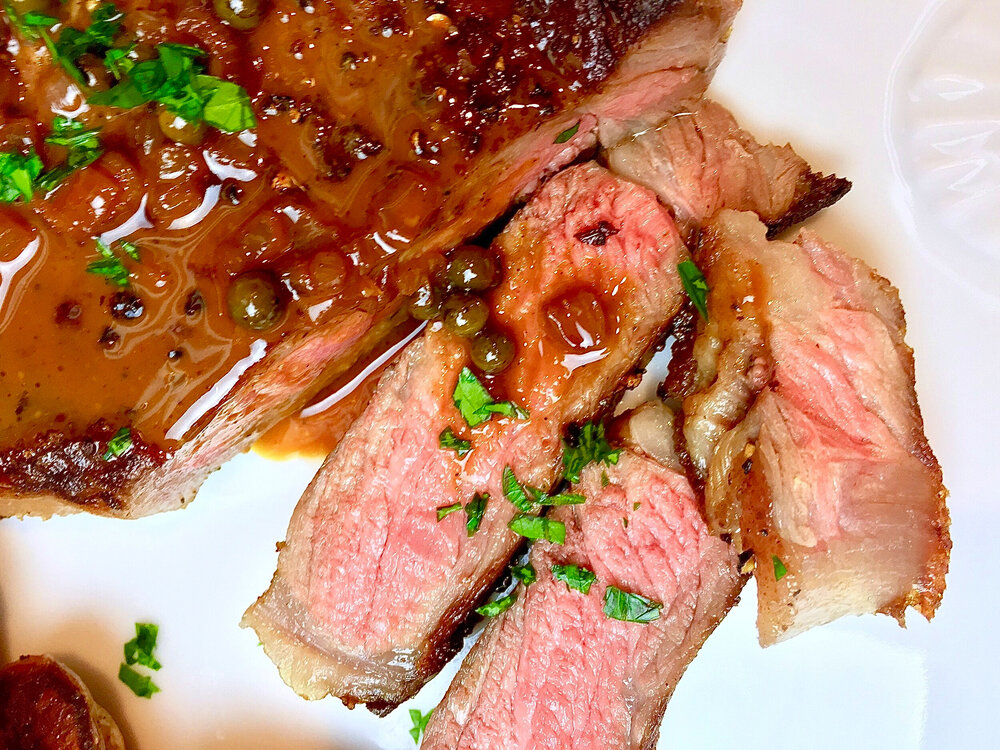
"STEAK AU POIVRE A DEUX"
Serves 2 hungry Valentines
INGREDIENTS
2 boneless NY Strip Steaks
1 Tablespoon good olive oil
3 Tablespoons unsalted butter, room temperature
10 fresh thyme sprigs
6 fresh rosemary springs
1 large shallot, finely chopped
1/3 cup Cognac
1/3 cup demi-glace
1/4 cup heavy cream
1/2 Tablespoon Dijon mustard
1 Tablespoon jarred green peppercorns, drained + rinsed
1/4 cup chopped fresh, Italian flat-leaf parsley
Kosher salt + freshly ground black pepper
Preheat oven to 400 degrees.
Pat the steaks dry with paper towels +, just prior to cooking, generously season all sides with Kosher salt + freshly ground black pepper + press seasonings into steak.
Using a paper towel, wipe the inside of a large, preferably cast iron, skillet with the Tablespoon of olive oil. Place oiled skillet over a high flame +, as pan is heating, spread half the butter on one side of both steaks. When pan starts to smoke, place steaks butter side down in the skillet. Cook for 4-5 minutes, spooning out any excess liquid that accumulates in the pan.
While steaks are cooking, slather the remaining butter on the other side of the steaks. When ready, flip steaks over + top each steak with half of the rosemary + thyme + then slide the pan into the preheated oven + cook an additional 5 minutes for medium-rare. Remove steaks to a cutting board and allow them to rest for 5-10 minutes.
Pour excess fat from the pan (do not wipe it out) + place it back on the stove over med-high heat.
Add shallots to the pan + saute until translucent + tender, scraping up any delicious bits off the bottom of the pan, about 3-5 minutes.
Remove pan from heat + add Cognac (never pour directly from the bottle). If you have a gas stove, return pan to burner, lean back + tilt the pan to ignite the Cognac. If you don't have a gas stove, use a kitchen lighter. The Cognac will flame for a few minutes + then die down at which point you stir in the demi-glace and cream and simmer for 1-2 minutes until sauce thickens slightly.
Finish the sauce by stirring in the mustard + peppercorns until well mixed. Season to taste + serve drizzled over steaks + garnish with chopped fresh parsley.
"ROSEMARY ROASTED GARLIC POTATOES"
Feeds 2-4 hungry people
INGREDIENTS
2 lbs. small potatoes, rinsed with skins on (we used a mix of yellow and purple potatoes)
Good olive oil
3/4 teaspoon Kosher salt
8-10 twists of freshly ground black pepper
3 sprigs of fresh rosemary
2-3 large garlic cloves, smashed + chopped
2 Tablespoons chopped fresh, Italian flat leaf parsley
Preheat oven to 400 degrees.
Cut potatoes in half lengthwise + place them in a single layer on a large baking sheet lined with foil. Scatter rosemary (leaves only) + chopped garlic over sliced potatoes. Drizzle generously with olive oil + season with the salt + pepper. Using your hands, mix potatoes, garlic, rosemary leaves + seasonings until well combined.
Roast potatoes in the oven for 45-60 minutes, until they are crispy + brown. Flip them at least twice during that time so that they cook evenly.
Remove potatoes from oven + toss with fresh parsley + season to taste with additional salt + pepper.